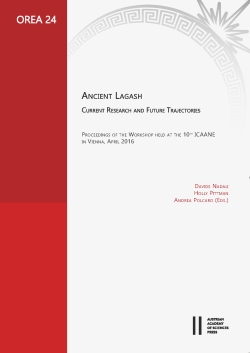
Ancient Lagash, pp. 67-83, 2022/12/27
Proceedings of the Workshop held at the 10th ICAANE in Vienna, April 2016
Recent fieldwork conducted by the Italian Archaeological Expedition at Tell Zurghul, ancient Nigin, has revealed evidence of a 3rd millennium BC phase mainly consisting of pottery sherds, inscribed bricks and clay cones scattered on the site surface. This paper examines the data gathered in Area C, located in the western part of the site, through a preliminary survey carried out during the 2015 first campaign. This sector was selected for the presence of a 160m-long ridge that rises 5m above the surrounding plain and for its exceptionally dense concentration of surface material. The first results of this work, including a preliminary analysis of the pottery and artifacts collected as well as observations on the features visible on the ground, provide some elements for reconstructing the use of this sector of the ancient city.
Keywords: Southern Mesopotamia, Tell Zurghul, 3rd millennium BC, survey, industrial area, ceramic production